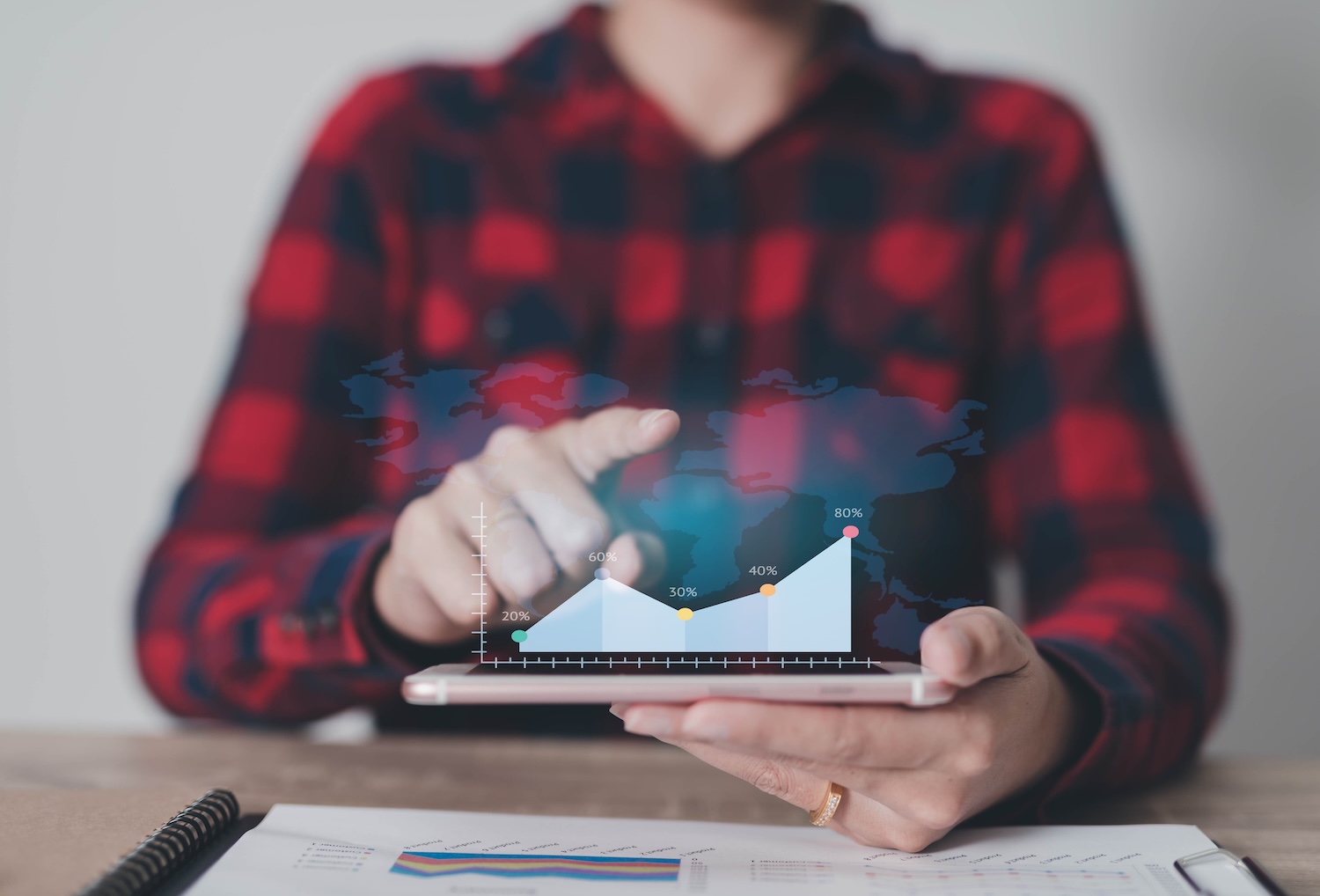Conversion Rate: Your Complete Guide to Converting More Effectively
Conversion rate represents a strategic indicator for measuring and optimizing your sales performance. This metric, which calculates the percentage of prospects converted into customers, reveals the effectiveness of your sales process. In 2025, high-performing companies systematically analyze and optimize their conversion rates to maximize results. Discover concrete methods to calculate, analyze, and improve this key indicator of your commercial success.
- Definition: Conversion rate measures the percentage of prospects turned into customers. A high rate reflects the efficiency of your sales process and directly impacts revenue.
- Calculation & measurement tools: The basic formula is (sales / prospects) × 100, with variations by sales cycle stage. Track it through CRM systems and dashboards (e.g., Power BI).
- Benchmarking: Average conversion rates vary significantly across industries (IT services, e-commerce, etc.) and acquisition channels (direct sales, digital marketing).
- Optimization levers: To improve it, focus on prospect qualification (scoring), mastering advanced closing techniques, and leveraging automation and sales enablement tools.
Understanding conversion rate in a B2B context
Definition and importance in the sales cycle
Conversion rate measures a company's ability to turn sales opportunities into actual deals. In a B2B context, this ratio takes on special significance because the buying journey often spans several months and involves multiple decision-makers.
A high rate reflects excellence in your sales process: relevant lead qualification, tailored responses to specific needs, and optimal timing for follow-ups — an approach strongly reinforced by the AIDA method. For example, an IT services company that converts 30% of its qualified prospects demonstrates remarkable mastery of its sales cycle.
This metric also reveals potential optimization points: friction moments in the customer journey, recurring objections, or negotiation phases that need strengthening.
Different types of conversions to measure
In a high-performing B2B sales strategy, several conversion indicators deserve your attention. Converting a visitor into a qualified lead constitutes the first key step, measurable through actions like premium content downloads or demo requests.
Another essential measure concerns converting leads into concrete sales opportunities. For example, a software solutions company can track the ratio between demo requests and actual sales meetings held.
The final phase analyzes the progression from opportunity to customer, with specific metrics according to your sector. A software publisher might measure the rate between completed POCs (Proof of Concept) and signed contracts.
Impact on overall sales performance
An optimized conversion rate generates major impacts across all sales indicators. B2B companies displaying rates above 25% achieve on average 40% additional revenue with constant resources.
Improving conversion rate significantly reduces customer acquisition costs — a result that also boosts key metrics like ARR and MRR for SaaS companies. A 5-point improvement allows an average 30% savings on marketing budget while maintaining the same sales volume.
Mastering this indicator also strengthens sales pipeline predictability. Sales teams can more accurately anticipate their results and adjust their actions in real-time, creating a virtuous cycle between prospecting and closing.
How to effectively calculate your conversion rate
The basic formula and its variations
The standard method for calculating your conversion score follows simple mathematical logic: number of sales completed / total number of prospects contacted × 100. For example, with 50 sales from 500 prospects approached, your ratio reaches 10%.
To refine this analysis, several variations exist according to your objectives:
- Rate by stage: qualified prospects / contacted prospects
- Final closing rate: signed contracts / sent proposals
- Global rate: active customers / incoming leads
A savvy sales director adapts these calculations to their sales cycle. In the B2B services sector, stage-by-stage measurement reveals improvement areas: a sharp drop between two phases signals an immediate optimization need.
Measurement tools and dashboards
Setting up a customized dashboard proves essential for tracking your conversion rates in real-time. Modern business intelligence solutions like Power BI or Tableau Software transform your raw data into dynamic and intuitive visualizations.
A high-performing CRM constitutes the cornerstone of your tracking system. These platforms offer advanced reporting features: pipeline tracking, predictive analytics, and automated alerts on significant variations in your rates.
Data visualization facilitates rapid identification of trends and improvement points. Interactive charts allow analyzing performance by salesperson, customer segment, or sales cycle phase. Modern dashboards even integrate artificial intelligence to automatically detect optimization opportunities.
Comparative analysis by industry
B2B conversion rates vary considerably across markets in 2025. The IT services sector displays remarkable performance with an average of 4.5%. Software publishers follow closely at 4.2%.
Industrial distribution maintains a stable score around 3.8%. A result explained by shorter sales cycles and already established customer relationships. Conversely, strategy consulting caps at 2.6%, a consequence of complex decision-making processes.
B2B financial services stand out with a 5.1% rate. This performance relies on increased digitization of customer journeys and advanced offer personalization. An inspiring example for other sectors seeking to optimize their conversions.
What is the average conversion rate by channel?
E-commerce and online sales
In 2025, the e-commerce market reaches new maturity with a global conversion rate between 2.7% and 3%. Mobile purchases now represent 55% of transactions, despite a lower conversion score (2.2%) than desktop (3.7%).
The average duration of a purchasing session stands at 17 minutes, during which the visitor consults an average of 22 pages. A revealing figure of increasingly complex buying journeys.
The best results are observed in food (5.1%) and financial services (4.4%). Conversely, luxury and furniture display more modest scores, around 1.5%, due to longer decision cycles.
Direct sales and commercial prospecting
Traditional phone prospecting records an average conversion rate of 14% thanks to smart calling in 2025. This targeted approach far surpasses cold calling methods, which struggle to reach 1% conversion.
High-performing salespeople average 100 daily calls to generate 15 to 20 qualified contacts. Data that underlines the importance of an updated prospect file to maximize commercial action efficiency.
Face-to-face meetings remain particularly effective with a 30% conversion rate for experienced salespeople. This performance is explained by the quality of direct interaction and the ability to adapt the pitch in real-time to prospect needs.
Digital marketing and lead generation
B2B digital marketing campaigns reach new heights in 2025. Webinars stand out with a remarkable 9% conversion rate for active participants. AI-powered content personalization multiplies newsletter impact, converting 4.4% of subscribers into qualified prospects.
Data analysis reveals exceptional ROI for LinkedIn campaigns, with 92% open rates on personalized messages. AI-optimized landing pages now convert 7% of visitors into qualified leads.
Multichannel strategies integrating professional social networks and marketing automation generate 38% additional leads compared to traditional approaches. A telling example: an IT services company doubled its conversions by combining expert content and intelligent retargeting.
Commercial optimization levers
Prospect qualification and scoring
Implementing an effective scoring system — for example, by applying the BANT method — radically transforms the sales approach. Good scoring relies on precise behavioral criteria: interaction frequency, engagement with technical content, or specific documentation requests.
High-performing companies establish a 100-point evaluation grid. For example, a whitepaper download earns 15 points, active webinar participation 25 points, a demo request 40 points.
Behavioral data analysis allows identifying the most relevant buying signals. A CFO consulting the pricing page three times in one week deserves special attention. This scientific approach to scoring naturally increases the relevance of sales actions.
Advanced closing techniques
Mastering modern closing techniques — including frameworks such as CAP SONCAS or Challenger Sales — radically transforms sales results. One particularly powerful method consists of structuring the value proposition as positive alternatives, giving the prospect a choice between two advantageous options rather than a simple yes/no decision.
High-performing salespeople also use strategic silence technique after an offer presentation. This 5 to 7-second pause creates space conducive to prospect reflection and significantly increases conversion chances.
Temporal projection closing proves formidable in B2B: "When would you like to start the project?" This formulation naturally presupposes agreement while opening discussion on practical modalities.
Another powerful lever: recap established agreement points before proposing signature. This synthesis reinforces the coherence of the decision-making journey.
Automation and sales enablement tools
Adopting intelligent automation solutions revolutionizes sales performance in 2025. Next-generation CRMs analyze customer interactions in real-time to automatically adapt follow-up sequences according to engagement level.
A concrete example: a services company tripled its response rate thanks to personalized messages sent at optimal moments determined by AI. Modern tools also automatically prioritize leads according to their purchase maturity.
Large-scale personalization becomes reality with virtual assistants that draft contextualized sales proposals in minutes — an essential gain for any Account Manager or BDR looking to focus on high-value opportunities. This automation frees valuable time that salespeople dedicate to strategic exchanges with their qualified prospects.
FAQ
What is a "good" conversion rate in B2B?
It varies greatly by sector and channel. However, a global conversion rate of qualified prospects to customers around 20-30% is often a good target.
How can I simply calculate my overall conversion rate?
Divide the number of finalized sales by the total number of prospects contacted over a given period, then multiply the result by 100.
Conversion Rate: Your Complete Guide to Converting More Effectively
Strengthen prospect qualification to better target efforts, and perfect closing techniques to more effectively conclude engaged sales.
Turn opportunities into wins
With Cuevr, close more and faster
Cuevr helps you organize your thoughts and maximize every detail to persuade prospects more effectively and accelerate closing.
Precise, impactful proposals aligned with your goals.
Smart Builder, AI scoring, detailed tracking, and actionable recommendations to guide every step from qualification to closing.
Accelerate your sales cycles, Reduce ghosting, Improve your close rate, Enhance the quality and impact of your proposals
.avif)


.avif)


